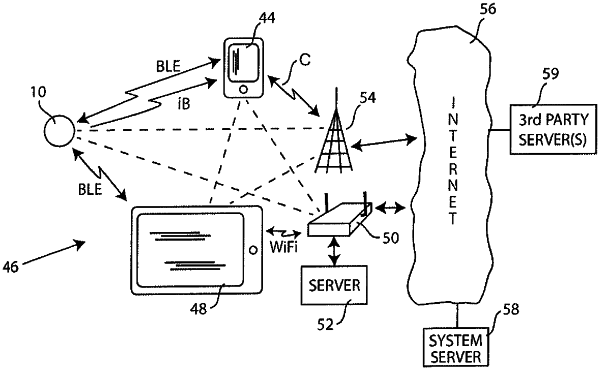| CPC G06Q 30/0261 (2013.01) | 15 Claims |

|
1. An apparatus comprising at least one processor and at least one memory including program code, the at least one memory and the program code configured to, with the processor, cause the apparatus to at least:
receive, from a visitor detection unit, visitor event metadata comprising presence data associated with a visitor event at a merchant location, wherein:
the visitor event metadata is generated in response to a passive infrared motion detection event, and
the visitor event metadata comprises visitor event type data indicating a direction of travel of the consumer device and visitor event timestamp data;
receive consumer device data associated with the consumer device, wherein the consumer device data comprises application data from at least one application executing on the consumer device, and wherein the consumer device data is generated in response to a BLE event of the at least one application executing on the consumer device;
in a circumstance in which the visitor event metadata is received from the visitor detection unit and the consumer device data is received prior to expiration of a timeout period:
correlate the visitor event metadata and the consumer device data to generate multisource correlated data associated with a user of the consumer device based at least in part by associating user information, application information, and consumer device information associated with the visitor event metadata and the consumer device data, wherein correlating the visitor event metadata and the consumer device data to generate multisource data comprises reconciling inconsistencies between the visitor event metadata and the consumer device data;
identify, from a customer profile database, a consumer profile associated with the visitor event, wherein the consumer profile comprises point-of-sale information and historical visitor event data from the merchant location that are associated with the user; and
update the consumer profile based at least in part on the multisource correlated data, wherein the updated consumer profile is used to facilitate communications with a server.
|